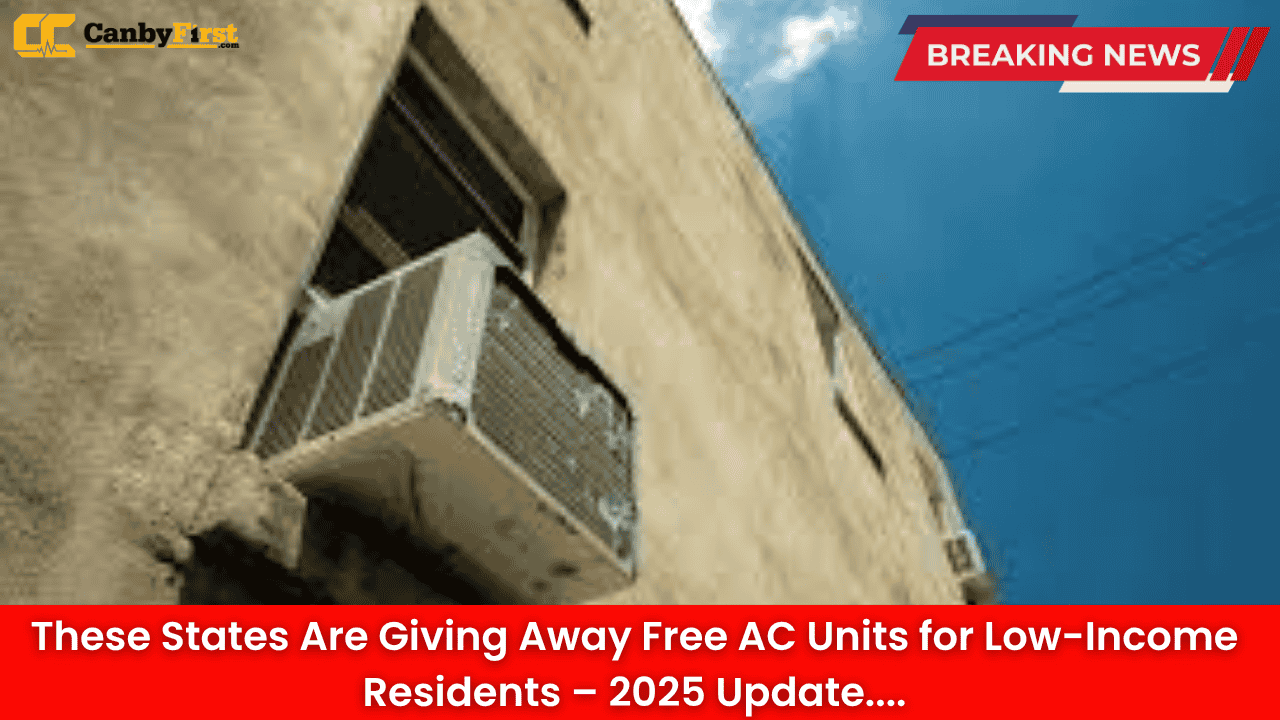New York, US:
As climate change drives hotter summers across the United States, several states are stepping up efforts to provide relief to low-income families by offering free air conditioning units. With rising temperatures putting vulnerable communities at risk, states are expanding cooling assistance programs in 2025 to ensure households stay safe during heat emergencies.
States Leading the Initiative
Free AC distribution is part of broader energy assistance programs tied to both state and federal funding. In 2025, states such as New York, Illinois, California, and Texas have rolled out updated programs aimed at combating extreme summer heat.
Also Read
-
New York: The state continues its Cooling Assistance Benefit under the Home Energy Assistance Program (HEAP), helping income-eligible households receive a free window or portable AC unit. This year, eligibility has been expanded, and more funding has been allocated to reach renters as well as homeowners.
-
Illinois: Officials have broadened the Low-Income Home Energy Assistance Program (LIHEAP) to include cooling aid, giving households options for free AC units or repair of existing units.
-
California: With the West facing steadily increasing heatwaves, California’s Department of Community Services promotes free cooling equipment combined with energy-efficient models to reduce long-term electricity costs.
-
Texas: After experiencing sweltering summers and power grid challenges, Texas has introduced targeted programs in major counties such as Harris and Dallas to provide low-income residents with AC relief, particularly focusing on elderly and disabled populations.
Why Free AC Units Matter
The initiative comes at a time when record-breaking summer temperatures have made cooling not just a comfort but a necessity. Public health experts warn that excessive heat is now among the deadliest weather-related threats in the United States. Vulnerable groups—including seniors, children, and individuals with chronic health conditions—face higher risks of dehydration, heatstroke, and other complications when living in overheated environments.
Air conditioning ownership is still not universal, particularly among low-income households, who often struggle with both the upfront cost of units and the added energy bills. By supplying free or subsidized AC units, states are taking a proactive approach to public health, reducing medical emergencies and preventing heat-related deaths.
Eligibility and Application Process
Each state programs its own eligibility requirements, but typically the criteria center on three main factors:
-
Proof of income at or below state poverty guidelines
-
Residency within the state where the program is offered
-
Household members who are elderly, young, or medically vulnerable
Applicants usually need to provide documentation such as pay stubs, rental agreements, utility bills, or proof of government assistance. Most states operate the sign-up period shortly before the summer heat season begins, ensuring installations or distributions are completed quickly.
How Communities Benefit
The programs are not just about health benefits but also about equity. Many lower-income families live in older housing units lacking central air, making summertime unbearable. By receiving free cooling units, households not only survive high temperatures more comfortably but also achieve greater stability during unexpected heatwaves.
Local community agencies are often the frontline distributors of these units, creating opportunities for outreach programs that connect households to additional resources, such as utility bill support, energy efficiency education, and weatherization improvements.
Balancing Energy Demand
While states are providing more AC units, they are also mindful of the strain on electric grids. To prevent overuse and potential blackouts, many programs provide energy-efficient appliances. Some state energy offices also encourage pairing free AC distribution with rebates for solar energy installation or weatherproofing upgrades to homes.
This dual approach not only ensures immediate comfort but works toward longer-term sustainability. Energy-efficient units draw less power, helping reduce monthly bills, which is especially crucial for low-income households already battling utility debt.
Public Response and Expansion
Residents across participating states have praised the 2025 expansions, with many calling the programs “lifesaving.” Local health departments report that AC accessibility helps lower emergency room visits during major heat events.
Looking ahead, policymakers are pushing to expand funding so even more households can qualify. Some states are exploring pilot programs for free mini-split cooling systems, which are more efficient than window units. Others are integrating cooling with air purification systems, an added benefit in areas affected by wildfire smoke.
A National Trend
While not every state offers free AC units directly, most fund similar programs through LIHEAP, which now covers both heating and cooling needs. As heat becomes a year-round concern, more states are expected to adopt automatic cooling assistance benefits similar to heating programs long in place across colder northern states.
FAQs
Q: Which states currently give out free AC units?
New York, Illinois, California, and Texas are leading in 2025, with additional states expected to expand similar programs this summer.
Q: Who qualifies for a free AC unit?
Eligibility is based primarily on income level, residency, and vulnerable household members such as seniors, children, or people with medical needs.
Q: How do residents apply for these programs?
Most households apply through local community action agencies or state energy assistance portals, with documentation of income and residency required.
Q: Are the air conditioners energy-efficient?
Yes, most distributed units are Energy Star-certified models designed to reduce electricity usage and lower monthly energy costs.
Q: Will these programs continue in future years?
State officials have indicated that funding and expansions will continue, especially as climate change increases the need for cooling assistance nationwide.












